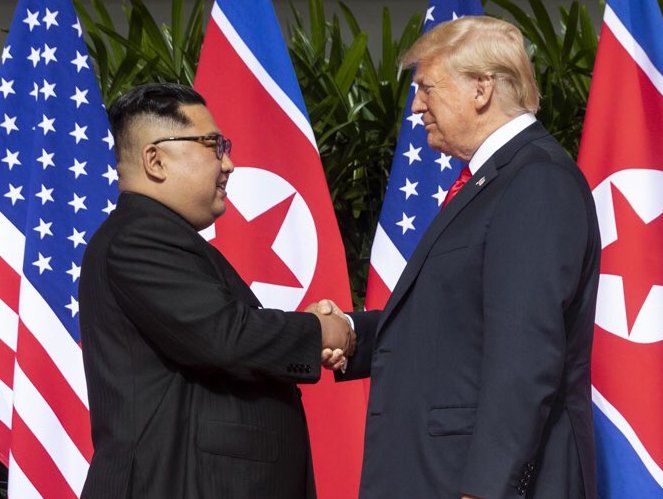The Peninsula
The Second Trump-Kim Summit: Look for a Process, Not a Deal

By Mark Tokola
The exact date and place of the second summit between Donald Trump and Kim Jong-un have not been announced but the White House has said that it will take place before the end of February. It is widely speculated that the two leaders will meet in Vietnam and the government of Vietnam has said that it is willing to host the meeting. The symbolism of meeting in a country that was once an enemy of the United States, but which now has friendly relations with Washington would be striking. But what would be agreed upon at the second summit?
In some ways, the pressure of expectations is higher on the second summit than the first. The first summit in June 2018 was historic simply for having happened. It was the first time a U.S. President had met with a North Korean leader. The announcement that North Korea was willing to “denuclearize the Korean Peninsula” and would stop testing missiles and nuclear devices was a breakthrough, but only a step towards a solution to the problem. The hope, since dashed, was that the summit would be followed by meetings between U.S. and North Korean negotiators to begin the process of agreeing upon details – definitions, concessions, timelines, and an end state. More may have been agreed behind the scenes that we know publicly but talks appear to have bogged down into a stalemate in which the U.S. demands, first, meaningful steps towards denuclearization and North Korea demands, first, an easing of sanctions.
In traditional — that is to say pre-Trump — diplomacy, negotiators would work to break such a stalemate before a summit occurred. The risks of a summit failure on such an important issue would be too high for the leaders to meet. An exception that proves the rule was the 1986 summit between Ronald Reagan and Mikhail Gorbachev in Reykjavik. That summit collapsed at the end, but enough spade work had been done by U.S. and Russian negotiators to result in the 1987 Intermediate-range Nuclear Forces Treaty. It is difficult to imagine that the pieces of a failed Trump-Kim summit on denuclearization could similarly be picked up by U.S. and North Korean negotiators.
The current situation seems to be that either or both President Trump and Kim Jong-un have not empowered their negotiators to negotiate. Meetings have been held between Secretary of State Pompeo, Special Envoy Steve Biegun, and their North Korean counterparts. But public accounts of these engagements suggest that the two sides merely presented their demands to one another. Unless negotiators can make concessions as well as demands, it is difficult to make progress. Donald Trump and Kim Jong-un may well have decided that a second summit was needed to personally negotiate an end to the current stalemate.
The problem is that Donald Trump and Kim Jong-un do not have the time or technical knowledge to negotiate a successful and sustainable denuclearization agreement no matter how many summits they hold. The details are too complex, involving declarations, inventories, definitions, timetables, verification, and inspections. The nuclear agreement with Iran on a Joint Comprehensive Plan of Action (JCPOA) is over 100-pages long. Whatever one may think of the Iran nuclear deal, it cannot be faulted for being too vague.
The second Trump-Kim summit may make headlines for a dramatic gesture, whether a “Peace Declaration” or a concrete step by Kim Jong-un – perhaps involving suspension or inspection of the Yongbyon nuclear facility. But unless we are surprised by the unveiling of a comprehensive scheme such as the JCPOA, the second summit cannot be the last chapter in the denuclearization of North Korea.
The measure of success for the second summit should not be whether a “deal” is made, but by whether the two leaders can agree to a process of negotiation to be conducted by officials at many levels, certainly well below that of the Secretary of State. There is much to be said for expressions of good-will and handshakes. But even if the United States and North Korea were in full agreement as to what denuclearization means, there would still be a lot a technical work to be done through direct, lower-level contacts. This also goes for myriad other issues such as how and when the United States would move to lift sanctions and normalize relations. If they are to succeed in their historic ambitions, Donald Trump and Kim Jong-un will need to trust their own officials, not just each other.
Mark Tokola is the Vice President of the Korea Economic Institute of America. The views expressed here are his own.
Photo by Dan Scavino Jr., assistant to President Trump. As a work of the U.S. federal government, the image is in the public domain.
